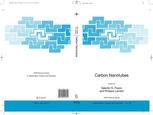

Most ebook files are in PDF format, so you can easily read them using various software such as Foxit Reader or directly on the Google Chrome browser.
Some ebook files are released by publishers in other formats such as .awz, .mobi, .epub, .fb2, etc. You may need to install specific software to read these formats on mobile/PC, such as Calibre.
Please read the tutorial at this link: https://ebookbell.com/faq
We offer FREE conversion to the popular formats you request; however, this may take some time. Therefore, right after payment, please email us, and we will try to provide the service as quickly as possible.
For some exceptional file formats or broken links (if any), please refrain from opening any disputes. Instead, email us first, and we will try to assist within a maximum of 6 hours.
EbookBell Team

0.0
0 reviewsIt is about 15 years that the carbon nanotubes have been discovered by Sumio Iijima in a transmission electron microscope. Since that time, these long hollow cylindrical carbon molecules have revealed being remarkable nanostructures for several aspects. They are composed of just one element, Carbon, and are easily produced by several techniques. A nanotube can bend easily but still is very robust. The nanotubes can be manipulated and contacted to external electrodes. Their diameter is in the nanometer range, whereas their length may exceed several micrometers, if not several millimeters. In diameter, the nanotubes behave like molecules with quantized energy levels, while in length, they behave like a crystal with a continuous distribution of momenta. Depending on its exact atomic structure, a single-wall nanotube –that is to say a nanotube composed of just one rolled-up graphene sheet– may be either a metal or a semiconductor. The nanotubes can carry a large electric current, they are also good thermal conductors. It is not surprising, then, that many applications have been proposed for the nanotubes. At the time of writing, one of their most promising applications is their ability to emit electrons when subjected to an external electric field. Carbon nanotubes can do so in normal vacuum conditions with a reasonable voltage threshold, which make them suitable for cold-cathode devices.